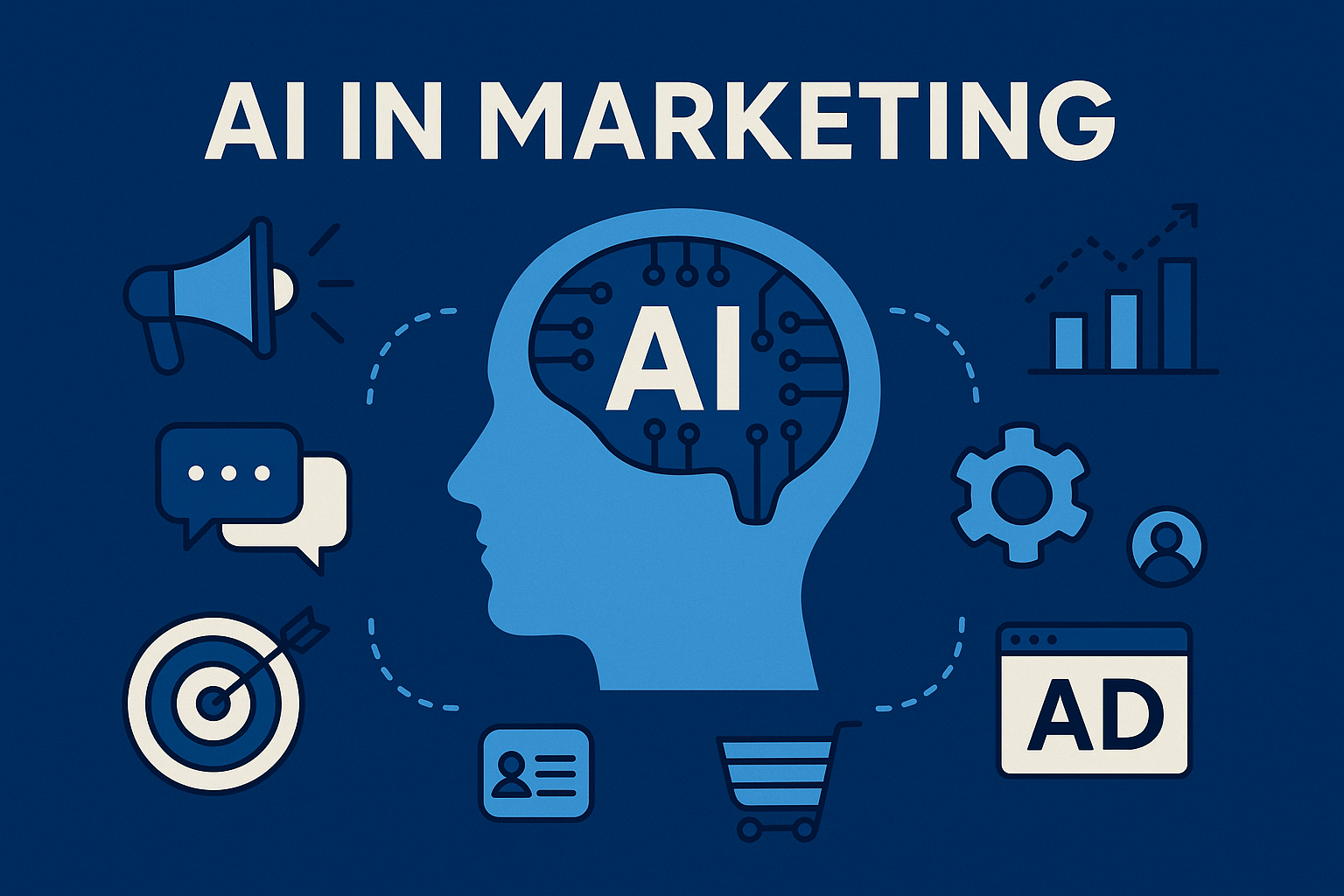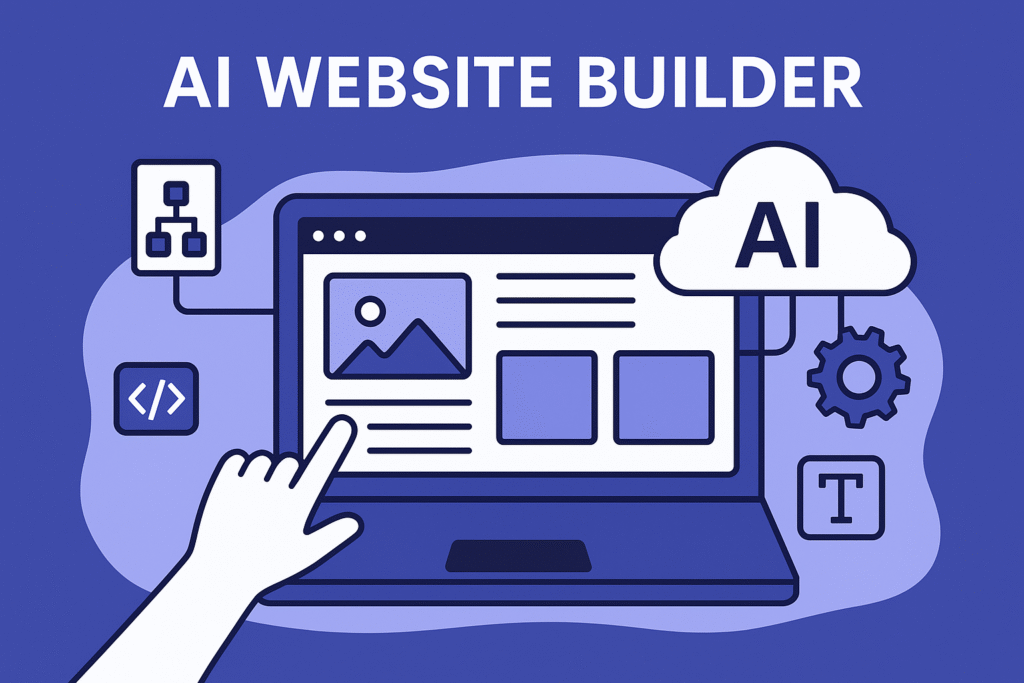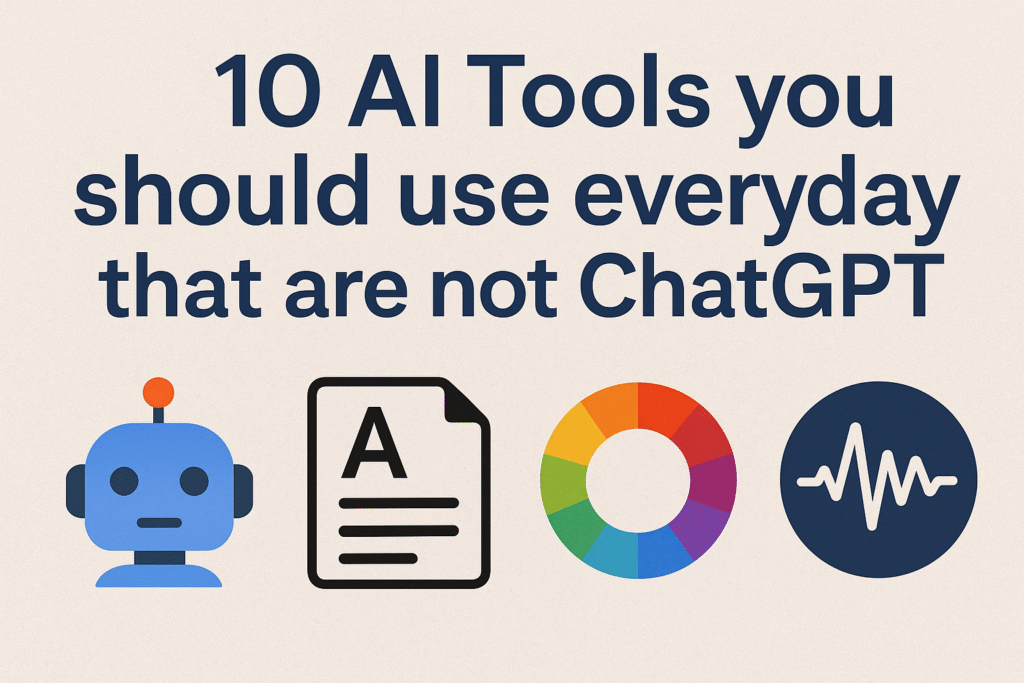Running a business today isn’t just about hard work but working smart as well. And that’s exactly where Artificial Intelligence (AI) steps in.
From managing customer support to tracking inventory, AI is quietly becoming the invisible personal assistant every business needs. It helps you save time, reduce errors, make better decisions, and even spot problems before they happen. Whether you’re a small startup or a growing enterprise, AI tools can take over boring, repetitive tasks so you can focus on what matters to grow your business.
In this blog, we’ll explore how AI can be used in different areas of business operations and how you can start using AI in Business Operations.
Importance of Using AI in Your Business Operations
AI isn’t just a fancy tech trend but a real game-changer for business operations.
Whether you’re a small business owner or managing a large company, AI can help you to:
- Automate boring and repetitive tasks
- Make faster and smarter decisions
- Improve customer service
- Reduce errors and manual work
- Keep you ahead of the competition
The Real Benefits of Implementing AI in Your Business Operations
As soon as the company embraces the concept of AI, it has an end number of benefits such as.
- Saves Time: AI can handle tasks like replying to customer queries, sending reminders, managing inventory, and generating reports. This gives you more time to focus on growth and strategy.
- Cuts Costs: By reducing the need for manual labour and speeding up processes, AI can lower your operational costs significantly.
- Better Customer Experience: AI tools like chatbots and virtual assistants can respond instantly, provide personalised support, and make your customers feel valued.
- Smarter Decision-Making: AI helps analyse large amounts of data and gives you useful insights, so you can make better business decisions.
- Increased Efficiency: With AI, tasks are done faster, more accurately, and consistently, as AI doesn’t take breaks.
How to use AI in Business Operations
You can use AI in different areas of business operations such as:
- Customer Support: Your teams cannot work 24/7 but an AI-powered chatbot can answer very common questions. It can handle some serious complaints. It can guide customers until the issue or complaint is not resolved.
- Sales and Marketing: AI tools work in a ‘CSTP framework’ for your business. For example, AI tools help in creating a client’s pitch, scheduling social media posts, tracking the company’s online web performance, and sometimes even predicting what your audience deeply desires by providing relevant data to your company.
- Data inspection: AI tools can see through data to give you more clarity, insights and precise answers. Now comes the most important part of any business, which is market research. So, what happens with the help of AI? So, AI tools not only plan the marketing but also guide throughout.
- Supply chain: AI for-seeing ability can help business operations to not waste their time in checking stocks’ requirements to deliver in the best way. Hence, stocks are not extras but well-timed and well-delivered.
- Content creation: The AI Tools can write quick hello email marketing messages to a business’s sign-up customers. It can also generate online survey forms and viral content ideas for a blog or social media platforms, and a lot more.
Top AI Tools you can use for Business Operations
Top AI Tools you can use for business operations that make your business activities smooth and efficient.
- ChatGPT (OpenAI): ChatGPT is a virtual writing assistant that is skilled in answering customer queries, brainstorming, document summaries, and much more. It seems every company has its own ChatGPT, just with a company’s data fed in differently from popular virtual writing assistants.
- Jasper AI: Jasper is like a rocket-fueled writing assistant that helps you quickly create a vast range of quality content, from blog posts and social media content to marketing ads and emails.
- Grammarly: Grammarly is a genius writing aid that goes beyond correct spelling and grammar. It provides suggestions on how to achieve clearer writing, shorter writing, sound just right, and different ways to say what you said.
- Asana AI: It is a completely new addition in Asana and a well-known as a team collaboration tool (another Slack). Asana AI makes it easier for your team and your clients’ team to work and discuss updates despite living in 2 different countries.
- Seamless.AI: Seamless.AI is a powerful tool for B2B sales teams seeking to enhance their prospecting efforts with AI-driven insights and automation. Its user-friendly interface and CRM integrations make it a valuable asset for sales professionals.
- My Bill Book: MyBillBook is a comprehensive billing and accounting software designed specifically for small and medium-sized businesses (SMBs) in India. Developed by FloBiz, it streamlines invoicing, inventory management, and GST compliance, making business operations more efficient and organised.
Steps to Implement AI Tools in Your Business Operations
Directly starting to use new AI tools in your firm can be a rookie mistake. But you can do some casual and easy steps without making too much AI noise. Let’s delve into:
Step-1: You need to know what you wish to achieve
You need to ask these 3 questions to get to know your business’s goal: What things do you need to make better? What seems to trouble and confuse you? and What new opportunity do you need to create, or is it present in your company without a job title? So, just take a deep breath and set only one single easy goal.
For example, you aimed to reduce response time to customers by 20 % through your company’s AI chat assistant.
After deciding on an end goal for your business, you need to review old data again in step 2.
Step-2: Recheck your Old Data and update it
Smart AI systems require good, well-updated and user-friendly data to store data/information to perform tasks seamlessly without a glitch.
So, you need to recheck the data you already have, not only that, but also identify whether the data contained is clean, bug-free, plus reusable.
Many times, your data may require fixing, merging, bug removal or adding new information to what is already given to that AI tool for a better performance.
After wrapping up with data updates, you can become more precise in your business needs and results. Why? Because you have both a goal and data/information as clarification proof for carrying out a pilot project in detail in step 3.
Step-3: Conduct your Pilot Project
After having a goal and data, it becomes very important to test whether the end goal is achievable or doable or not by your employees.
A pilot project is just like a trial period because it reduces future risk, allows feedback from users and shows the value to your business leaders. The entire point of conducting a pilot project is to see whether the goal has any back-out option left, or whether we can bring more AI tools towards the goal.
If a pilot project succeeds, then choosing the right AI tools can help your businesses move one step closer to their end goal in step 4.
Step-4: Pick the Right AI Tools
You can merge the right AI tools with your data, goals, and successful pilot projects. Therefore, ask the vendor what kind of stability their software AI tools will bring to your business systems, and whether they will expand along with your business. The most important thing to ask a vendor is how much support their software/tool offer.
Step-5: Lifelong Learning
Technology, AI or smart tech is a tool; you must know how to use it and what the recent updates are. So that you can make people know what the tool is capable of (and not) and how it is going to alter their jobs in future.
Step-6: Apply and Reapply it to Your Daily Business Operations
When you achieve the goal’s success during an AI tool trial and pilot project, then you can connect the AI within your daily operations. For example, Zapier will allow you to connect your AI tools and other apps without fuss and perform basic operations.
Final Thoughts
Artificial Intelligence is no longer exists just in giant companies but it is a readily available source of power that can elevate any startup company to new heights of the Fortune 500. By combining your work with AI tools, you enhance speed, make more accurate decisions, enrich customer experiences, and allow your workforce to concentrate on what counts.
FAQs
1. How is AI used in business operations?
AI in business operations automates and controls business activities, understands data, and improves decisions throughout your business.
2. Is AI only available to such massively large companies?
No. Lots of AI tools are readily available and cheaper to use even by the smallest of business firms.
3. Will this AI steal my operations job?
Usually, no. AI allows individuals to do what they are tasked to do. In fact, AI enables individuals to concentrate on what’s important and be more creative in it.
4. How to implement AI tools in business operations?
You can implement AI tools in business operations in 6 steps. Firstly, you need to know what you wish to achieve. Then, recheck your old data and update it. In step 3, conduct your pilot project. Thereafter, pick the right AI tools. Then, lifelong learning about AI tools is a must. Lastly, apply and reapply it to your daily business operations.
5. Which AI tool is used for team collaboration among B2B teams?
Asana AI makes it easier for your team and your clients’ team to work and discuss updates despite living in 2 different countries.
6. Can AI help with automating business emails and scheduling business social media posts?
Yes, definitely, AI helps with automating business emails and scheduling business social media posts. AI tools such as Copy.ai and Ocoya are the best examples of email and social media posts automation.
Reference Links:










